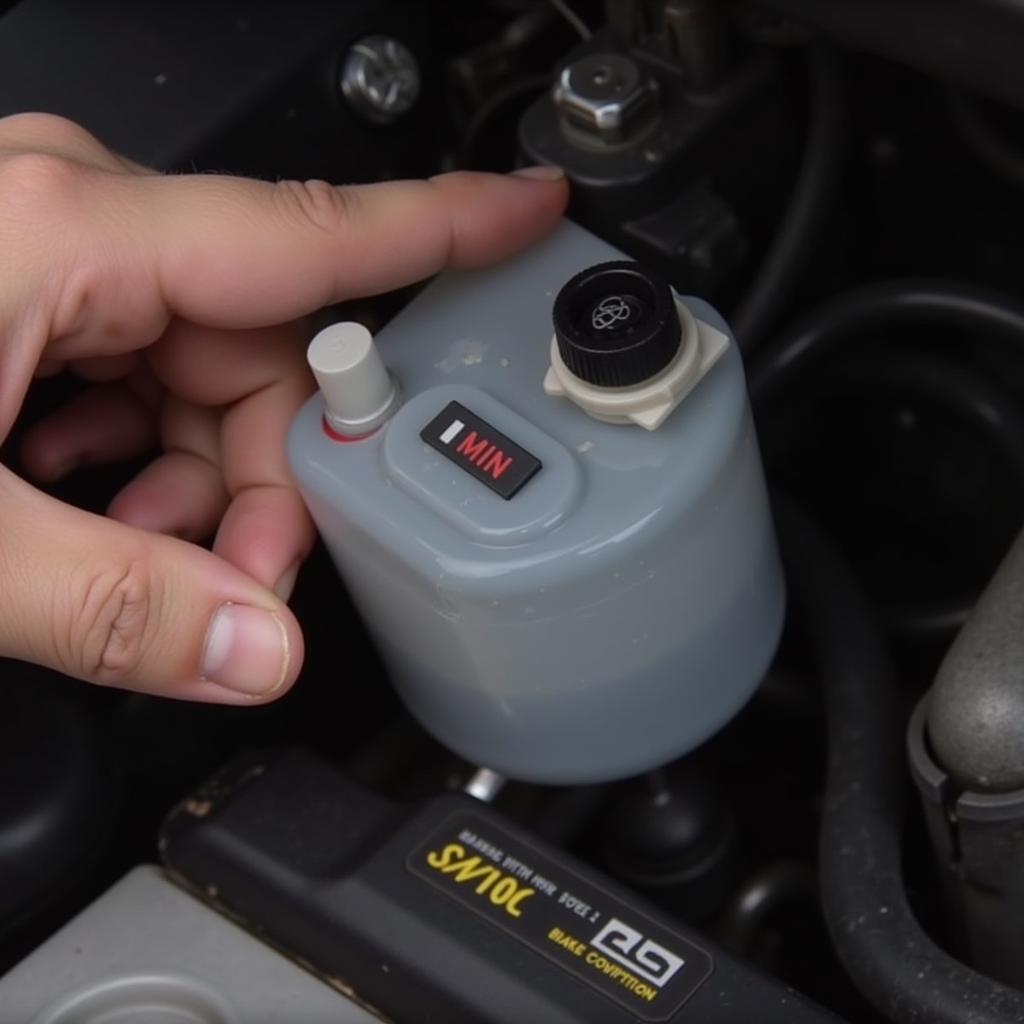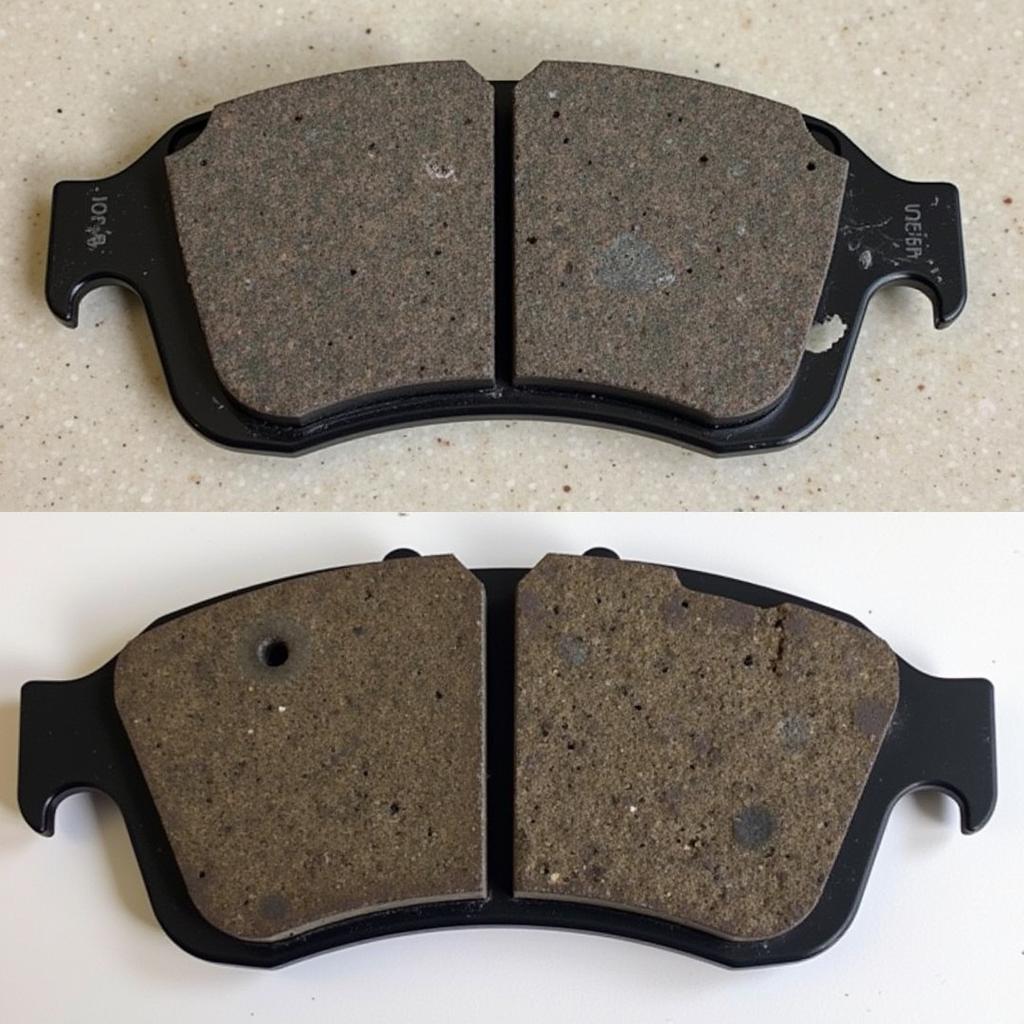The brake warning light on your dashboard is a crucial safety feature, and when it illuminates in your 2009 Toyota Venza, it’s essential to address the issue promptly. This light could signal anything from a simple parking brake oversight to a more serious problem within your braking system.
This comprehensive guide explores the common causes behind a 2009 Toyota Venza brake warning light and provides you with potential solutions, empowering you to address this issue effectively.
Understanding Your Venza’s Brake Warning Light
Before diving into the causes, it’s vital to understand what triggers the brake warning light. This light serves as a dual indicator:
- Parking Brake Engaged: The most straightforward cause is an engaged parking brake. Always ensure it’s fully disengaged before driving.
- Brake System Issue: If the light persists after disengaging the parking brake, it indicates a potential problem within the hydraulic brake system, low brake fluid, or a malfunctioning component like the brake sensor.
Common Causes of a 2009 Toyota Venza Brake Warning Light
Here’s a closer look at the common culprits behind a glowing brake warning light in your 2009 Venza:
1. Low Brake Fluid Level
Problem: Insufficient brake fluid is a primary cause. As brake pads wear down, the brake fluid level naturally decreases. If it drops too low, the warning light activates.
Solution: Check the brake fluid level in the reservoir under the hood. If low, carefully add the correct DOT 3 brake fluid specified in your owner’s manual. If you’ve recently topped off the fluid and the light persists, there might be a leak.
 2009 Toyota Venza Low Brake Fluid
2009 Toyota Venza Low Brake Fluid
2. Worn Brake Pads
Problem: Brake pads naturally wear down over time. When they reach a certain thickness, the wear indicator embedded within the pad contacts the rotor, triggering the brake warning light.
Solution: Inspect your brake pads’ thickness. If they appear significantly worn or you hear a screeching sound when braking, it’s time for a replacement.
 Worn Brake Pads on a 2009 Toyota Venza
Worn Brake Pads on a 2009 Toyota Venza
3. Faulty Brake Light Switch
Problem: The brake light switch, located behind the brake pedal, signals the brake lights to activate when you press the pedal. A malfunctioning switch can disrupt this signal and illuminate the brake warning light.
Solution: A faulty brake light switch usually requires replacement. You can test its functionality by observing if the brake lights illuminate when the pedal is pressed.
4. ABS Issues
Problem: While less common, a problem within the Anti-lock Braking System (ABS), such as a malfunctioning wheel speed sensor, can trigger the brake warning light alongside the ABS warning light.
Solution: Diagnosing ABS issues often requires a professional mechanic with a scan tool to read error codes and pinpoint the problem.
 Toyota Venza ABS Wheel Speed Sensor
Toyota Venza ABS Wheel Speed Sensor
What to Do When Your Brake Warning Light Comes On
-
Don’t Panic: Remain calm, especially if the car seems to be braking normally.
-
Check the Parking Brake: Ensure the parking brake is fully disengaged.
-
Safely Pull Over: If the light persists, find a safe location to pull over and assess the situation.
-
Check the Brake Fluid: Carefully inspect the brake fluid level.
-
Contact a Mechanic: If you’re unsure about any aspect of your brake system or suspect a serious issue, contact a qualified mechanic immediately.
“Ignoring a brake warning light can lead to dangerous driving conditions. When in doubt, always consult a professional.” – John Miller, ASE Certified Master Technician
Conclusion
A glowing brake warning light in your 2009 Toyota Venza should never be ignored. By understanding the common causes and following the recommended solutions, you can address the issue promptly and ensure your safety on the road. Remember, regular maintenance and timely repairs are key to a reliable and safe driving experience.
